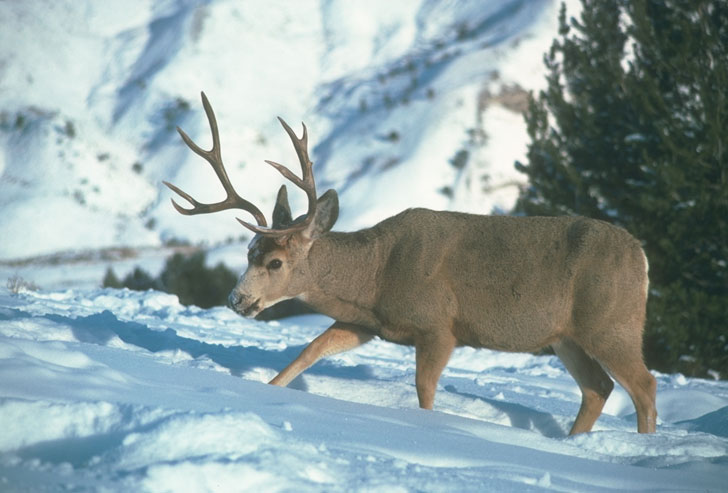Wyoming Range Mule Deer Showing Signs Of Recovery
 The winter of 2016-2017 was one of the harshest and most impactful on big game in Western Wyoming. It had been five years since mule deer in western Wyoming experienced elevated mortality due to ongoing frigid conditions. The Wyoming Range mule deer herd was especially impacted and the Wyoming Range Mule Deer Project is looking at the impacts of winter in relation to population dynamics. Population dynamics include adult survival, pregnancy, reproduction, fawn survival and how deer migrate seasonally between important habitats —migration corridors. One of the most pressing issues related to this deer population currently is fawn survival.
The winter of 2016-2017 was one of the harshest and most impactful on big game in Western Wyoming. It had been five years since mule deer in western Wyoming experienced elevated mortality due to ongoing frigid conditions. The Wyoming Range mule deer herd was especially impacted and the Wyoming Range Mule Deer Project is looking at the impacts of winter in relation to population dynamics. Population dynamics include adult survival, pregnancy, reproduction, fawn survival and how deer migrate seasonally between important habitats —migration corridors. One of the most pressing issues related to this deer population currently is fawn survival.
“We know that because of the effects of the winter and the stresses these does were exposed to in 2016-17, their fawn survival was greatly reduced,” Gary Fralick said, a Jackson area biologist. “And we know that fawns were dying because of poor body condition and malnutrition. Many of the fawns were stillborn in May and June of 2017, and we lost some fawns to predation and by other accidents as well—disease played a role in the survival of the 2017 fawn crop, and so now we want to continue to monitor the rate of recovery of this population.”
This past fall, Game and Fish Managers and University of Wyoming Researchers documented that does are benefiting from good habitat conditions; the snowpack that accumulated in the Wyoming and Salt Ranges helped to produce an exceptional amount of high quality forage for deer to eat. And, because many does were without fawns, the abundant forage resulted in an increase in the animals’ fat reserves.
“Provided the winter continues to stay mild, we will have extremely high over-winter survival, which will be the initial year of the recovery.  Fawns that are born with healthy weights and are able to survive the rigors of the first four to five months of life, will be crucial to the road to recovery,” Fralick said.
Hunters should also see good buck hunting in the west.
“High winter mortality did impact the number bucks checked in during the 2017 hunting season, but we were also able to sustain a fairly good buck harvest in spite of the effects of the winter. We believe that with two or three years of high over-winter survival, hunters will enjoy some of the best buck hunting that they’ve observed prior to the effects of the 2017 winter, and so we’re confident of that recovery potential because we’ve observed it in the past, and so the next two to three years will be essential in aiding that recovery, and this initial start of a mild winter will go a long ways into starting that initial phase of the recovery of the Wyoming Range herd,” Fralick said.
Over the next three to five years, depending on winter severity, Game and Fish will continue to document recovery and survival rates in each age class of fawns. The next capture will be in March, and wildlife managers plan to assess the number of fetuses that each doe is carrying and document body weight of the does and their body condition as they depart the winter ranges.

